In 100 Things Every Designer Needs to Know About People, Susan Weinschenk discusses the role of story telling in helping people process and store information. The basic premise is that if you want to get a powerful response from your users and you want them to remember you, your product needs to tell a story. A story with conflict, a story with real characters, a story with a moral. Let’s check out some travel sites on the Internet that do this well…
Airbnb
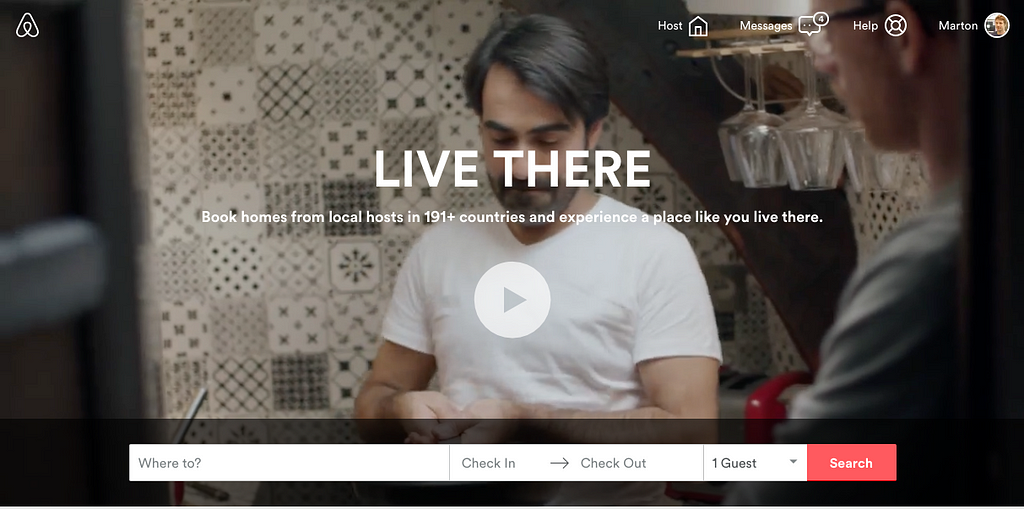
I’ve covered the Airbnb homepage in my previous article about peripheral vision in a pretty negative light because the moving video takes attention away from the search task users are their to perform. However the video itself is pretty special in that it showcases many different scenes from around the world that are stitched together to tell the story of what it’s like to travel locally, without hotels, without tourist traps.
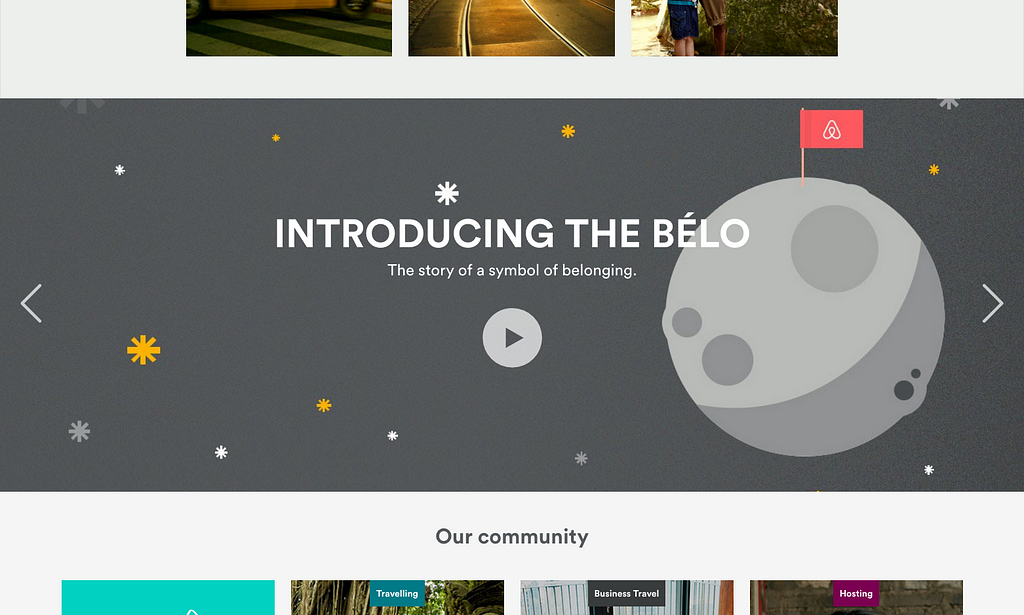
Further down the home page Airbnb even manages to tell the story of it’s own logo, marketing it as “a symbol of belonging”. The video itself is pretty emotive in its language and is backed by an acoustic guitar playing a dark minor riff in repetition.
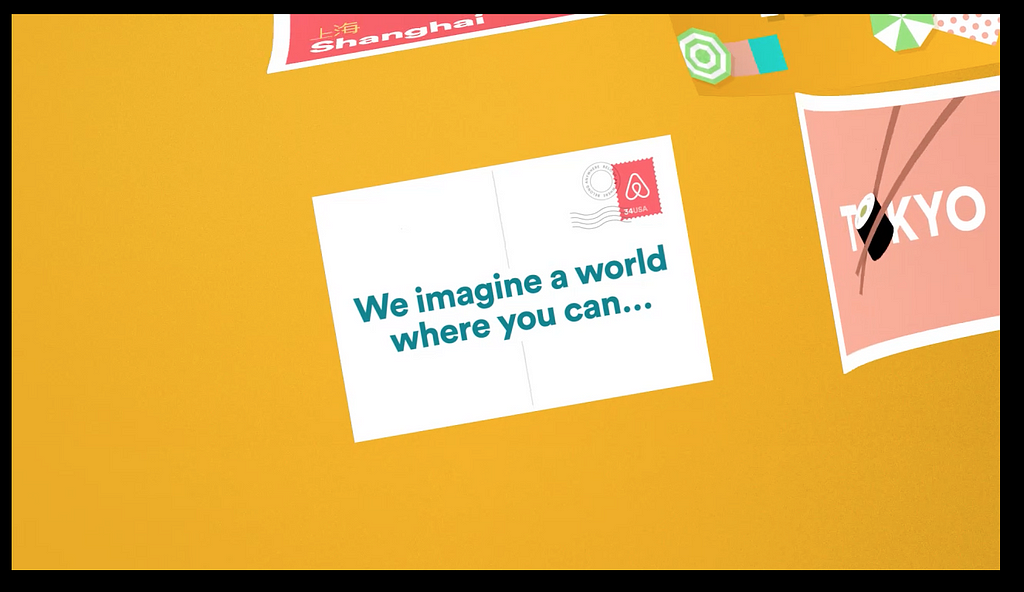
So what is the Airbnb story? The protagonist (you) is sick of working so hard to have genuine experiences in far away places, of being sucked into tourist traps by a relentless travel industry and paying huge amounts of money for sterile rooms. But now the hero comes along, Airbnb, who provides you the ability to seek out new experiences with new people in new places at the click of a button. The world suddenly feels smaller, more accessible, more real and you can finally have those genuine experiences you were looking for, and hopefully create some of those experiences for others as a host.
TripAdvisor
I don’t think there’s a better example of a travel business that’s made money almost solely through storytelling than TripAdvisor. It works so well in the travel industry with TripAdvisor locking in a revenue of 1.49 Billion dollars in 2015 alone.

Reviews are essentially miniature stories. Better yet each review transports the user to their holiday, pre-holiday — by allowing them to live an experience through the reviewers eyes before they even get on the plane.
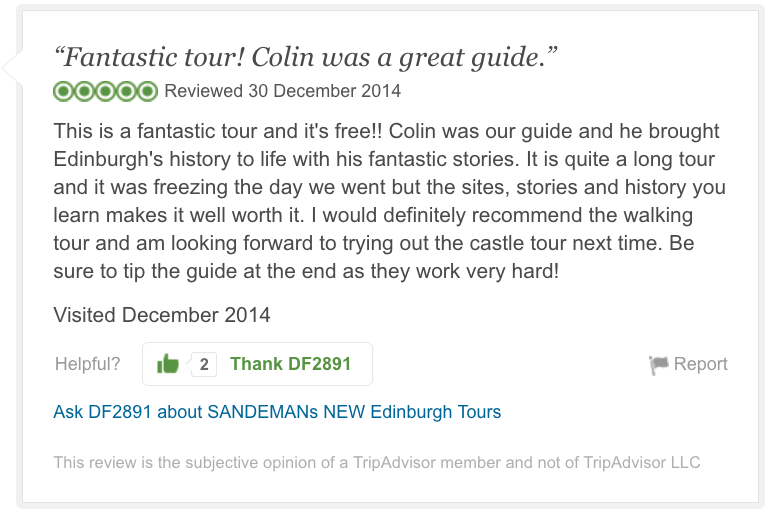
So what is the TripAdvisor story? The TripAdvisor story is a collection of short stories — a recent history of adventures from people all over the world. The example we have here is from Sandemans Edinburgh Walking tours. The protagonist is the reviewer, the hero is Colin their tour guide and the setting is a “freezing” day in Edinburgh. There are over 170 million reviews just like that one, 170 million stories from people who’ve travelled the world searching for adventure. It’s obvious how TripAdvisor got to the position it has and earned the good will it did — people love reading a good story as much as they love telling one.
HostelWorld
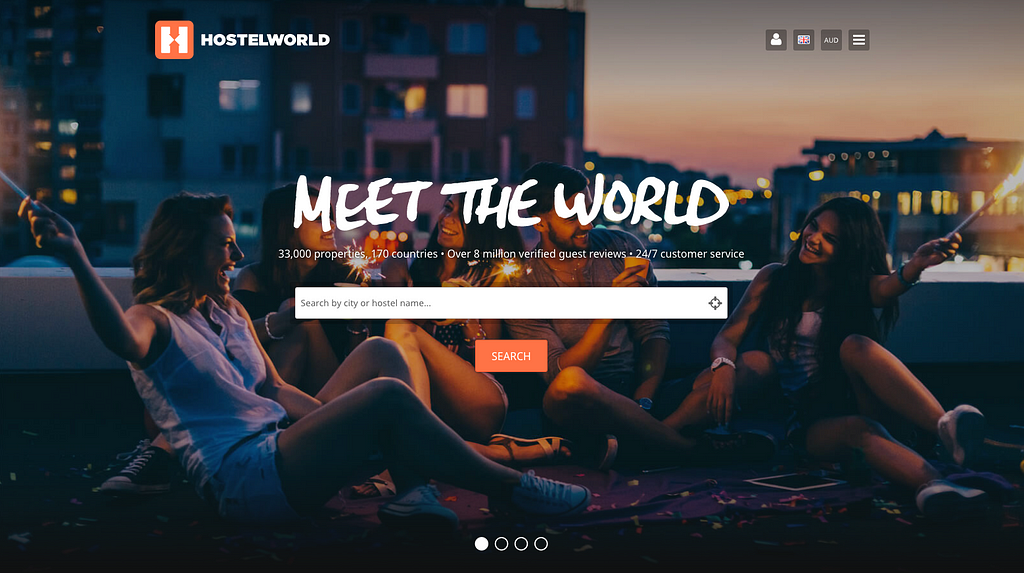
The homepage of HostelWorld takes a similar approach to Airbnb sans-video. If you can get the right photograph you can tell a pretty full story, one that is partly the product of the scene you show and partly the product of the users imagination. Seeing HostelWorld’s ‘Meet the World’ home page photograph definitely takes me back to all the crazy adventures I’ve had at hostels around the world and gets me excited about my next trip. It’s a very similar story to Airbnb but more youth targeted with less coffee’s and gourmet sandwiches and more picnics on cement roofs with beer bottles hidden out of shot.
Conclusion
At Rome2rio we’re still working out how to tell our story. A story where all those little busses, ferries, trains and taxis are as easy to find as air plane tickets. A Google Maps that gets you around the world and takes you on your journey in weird and wonderful ways.
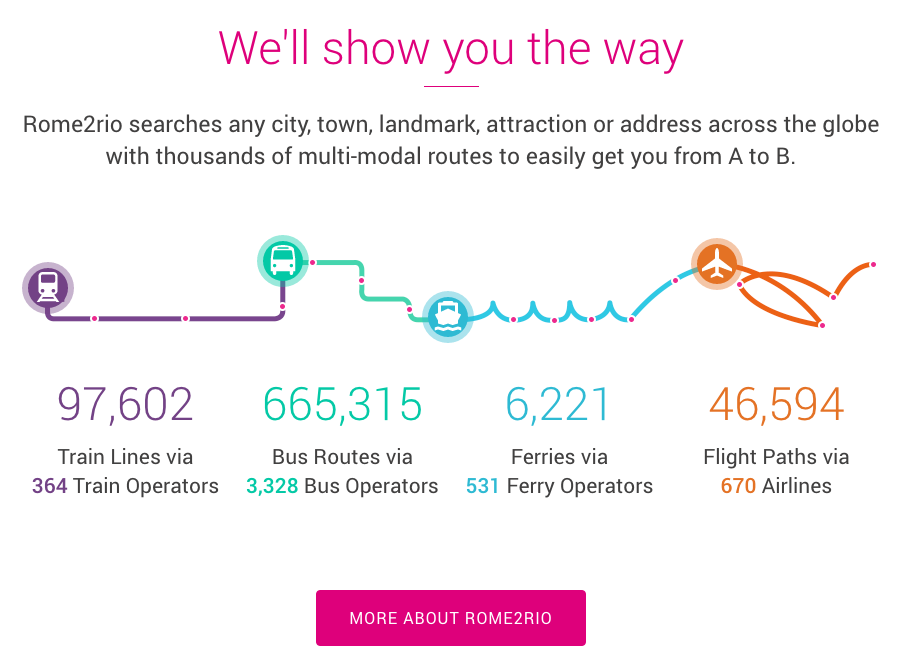
A section of the Rome2rio home page which explains the concept of multi-modal transportation
It’s a difficult story to tell and one that we keep in mind every day as we design and implement new features. In the travel industry brands live and die by the stories they tell and the stories told by their customers. Reviews, giant videos, and user interfaces that encourage not only convenience, but also exploration are ways that we achieve that connection.
How travel websites tell stories was originally published in UsableTravel on Medium, where people are continuing the conversation by highlighting and responding to this story.
